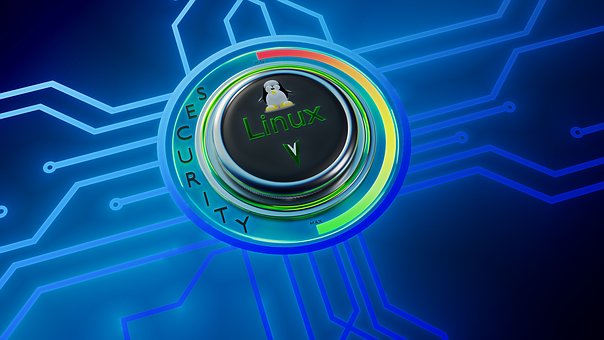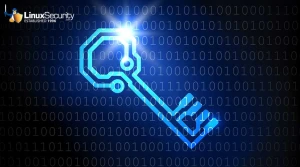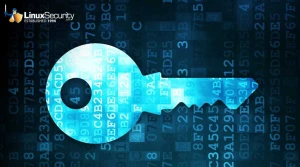Empowering Linux Resilience: Expert Insights on Crafting a Bulletproof Defense Strategy

Linux has various robust cybersecurity features, making it a popular choice among enterprises. Businesses can carry out critical operations with the peace of mind that they have the support of comprehensive, multi-layered cloud security frameworks to keep all data safe. Effective compliance management, all-encompassing data and network security measures, risk mitigation, and security patching help Linux Security harden your platform, keep away threats, and maintain integrity.
Linux can tighten security settings, reduce attack surfaces, and implement Linux patching best practices to protect your system from cybersecurity vulnerabilities and network security threats. Organizations must integrate the most effective strategies to combat issues the server might encounter. This article will discuss the basics of Linux Security, how to enhance compliance and security, how to evade threats, and a variety of solutions you can incorporate immediately.
What is Linux Security Hardening?
Bolster your Linux systems with the correct data and network security protocols. Hardening your server is the first step to having proper defense-in-depth protection. Here are the various suggestions to consider when strengthening your platform:
- Keep your system up-to-date, so you have the latest security patching solutions in place to keep your organization safe. Your Linux kernel, system libraries, and software packages require these updates to ensure you can discover and address data and network security issues immediately.
- Mitigate vulnerabilities to remediate threats with proper configurations and prevent cybersecurity vulnerabilities from weakening your server.
- Minimize open ports by removing unnecessary ones and monitoring the ones you keep to reduce your risk of exploits in cybersecurity.
- Enable Two-Factor or Multi-Factor authentication so that you have secure access to Linux systems, neutralizing threats that come with compromised passwords.
- Strengthen password policies to avoid brute-force attacks by requiring upper and lowercase letters, numbers, and special characters.
- Update the BIOS to ensure your server remains compatible with the latest hardware, resolve potential bugs, and enhance system performance. The cybersecurity trends the BIOS helps you patch can also improve your security posture.
- Uninstall end-of-life software to reduce your attack surface. Any unnecessary software is another way for cybercriminals to enter your system and steal your data.
- Employ regular cloud security auditing to see if your system is secure and complies with industry mandates, offering the opportunity to discover and suspend anomalies in your network quickly and efficiently.
How Can I Achieve Compliance on My Server?
Organizations in Linux environments struggle to maintain compliance with industry-specific regulations and standards. However, businesses must adhere to these policies to avoid legal ramifications and minimize clo ud security breaches that could cause financial loss, reputational damage, and significant downtime. Companies must review and comply with the Center for Internet Security's (CIS) industry-standard security benchmarks to secure systems and combat network security threats. Here are a few ways to achieve compliance on your Linux Security server:
ud security breaches that could cause financial loss, reputational damage, and significant downtime. Companies must review and comply with the Center for Internet Security's (CIS) industry-standard security benchmarks to secure systems and combat network security threats. Here are a few ways to achieve compliance on your Linux Security server:
- Conduct a comprehensive assessment of your Linux cloud security frameworks to identify security gaps and determine how compliant your server is with CIS benchmarks.
- Implement CIS-recommended security configurations, including user setting adjustments, system configurations, and network parameters.
- Enforce stringent access control by configuring user accounts, permissions, and privileges to coincide with CIS benchmarks, preventing authorized access and cloud security breaches.
- Secure the network infrastructure through proper firewall rules and configuration, encryption protocol implementation, and network traffic monitoring to protect your environment from data and network security threats.
Why Must We Enhance Linux Security?
Cybercriminals, with attacks like WannaCry ransomware (2017) and OpenSSL Heartbleed cybersecurity vulnerabilities (2014), require that businesses upgrade their Linux Security patching and compliance to reduce the chances of facing network security issues. The immediate operational disruptions, long-term reputational risks, and financial setbacks from these compromised accounts can affect organizations, stakeholders, clients, and employees.
Ransomware gangs have increasingly targeted Linux security systems after developing effective Linux-specific malware to harm servers. SprySOCKs, one such malware, conducts espionage attacks that China-linked threat actors utilize to exfiltrate documents and email credentials from government bodies. As these data and network security risks grow, Linux Security systems must enhance their protection to prevent these attacks from causing lifetime impacts on a business.
How Can You Evade the Rising Threats Targeting Linux?
 Organizations must establish a robust and comprehensive data and network security solution with multi-layered defense mechanisms that can effectively shield critical assets and data from malicious actors and attacks in network security. Elevating your security posture is crucial to company success, though it can be challenging without the right tools. Unfortunately, most solutions pay attention to a specific aspect of exploits in cybersecurity rather than offering comprehensive, holistic approaches to management. These limited functions include vulnerability scanning, single-layered threat detection, and simple compliance checks. To safeguard your server, you need more than just one aspect of a solution.
Organizations must establish a robust and comprehensive data and network security solution with multi-layered defense mechanisms that can effectively shield critical assets and data from malicious actors and attacks in network security. Elevating your security posture is crucial to company success, though it can be challenging without the right tools. Unfortunately, most solutions pay attention to a specific aspect of exploits in cybersecurity rather than offering comprehensive, holistic approaches to management. These limited functions include vulnerability scanning, single-layered threat detection, and simple compliance checks. To safeguard your server, you need more than just one aspect of a solution.
Let’s clarify a few shortcomings with network security toolkits:
- Traditional vulnerability scanners detect and report issues but do not always have the advanced, automated remediation and monitoring you need.
- Basic firewalls only carry standard protection features and no advanced functionalities that combat sophisticated threats effectively.
- Conventional compliance tools offer minimal regulatory checks that do not provide comprehensive insights into cyber security gaps and risks.
The Ultimate Security Solution Checklist
Here is a varied list of network security toolkits and the features they must have to boost your server and keep your data safe:
Vulnerability scanner
- Real-time vulnerability and Zero-Day attack detection
- Vulnerability assessments
- Scheduled scans
Patch deployment
- Automated patch deployment
- Zero-day mitigation
- Multi-platform security patching
- Patch testing and approval
Security configuration management
- Firewall auditing
- Password policies
- Account lockout and login security
- User account management
Compliance management
- Industry-specific compliance reports
- Group policies
- Mapping and auditing of systems
- Flexible deployments
Audit ports and high-risk software
- Elimination of outdated software
- Remote desktop sharing software and peer-to-peer software uninstallation
- Active port monitoring
- Identification of the types of ports
Reports and dashboards
- Security reports on vulnerabilities, patches, and more
- Interactive dashboards with comprehensive insights
Other important aspects
- Failover server to prevent downtime
- Secure gateway server for enhanced protection
You must assess how comprehensive the features and functionalities you utilize so that you have the security patching and compliance management you need. Then, organizations can prepare themselves for any future data and network security risks.
Final Thoughts on Synergizing Linux Hardening, Compliance, and Risk Mitigation
Enhance Linux Security by integrating robust principles like hardening, compliance, and risk management. These principles can foster a resilient cloud security framework that protects all vital assets of your data. Combining data and network security can improve security posture by helping you identify and neutralize potential threats before it is too late.
ManageEngine Vulnerability Manager Plus is an integrated threat and vulnerability management solution that helps craft a bulletproof defense for your organization. Its advanced features and capabilities streamline the vulnerability management process from one console. Vulnerability Manager Plus is a cornerstone for organizations fortifying their Linux infrastructure.





















